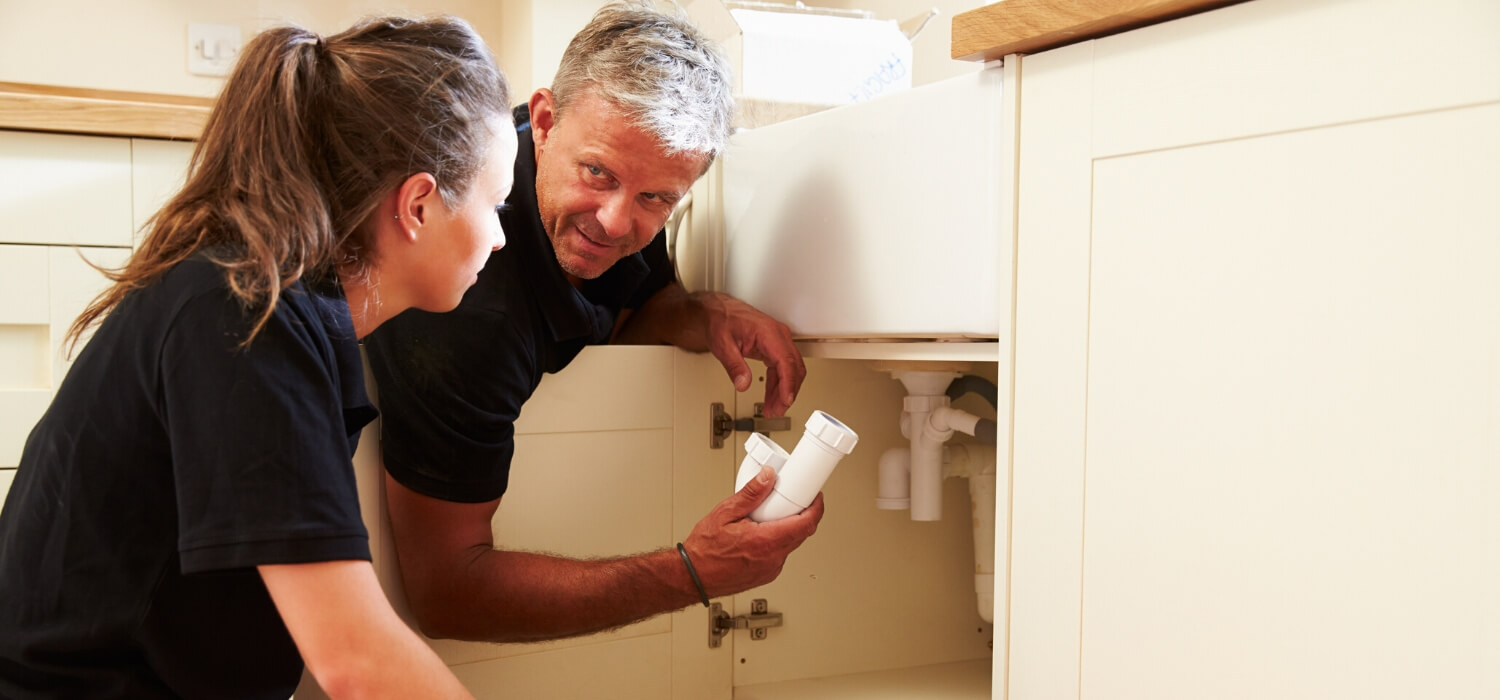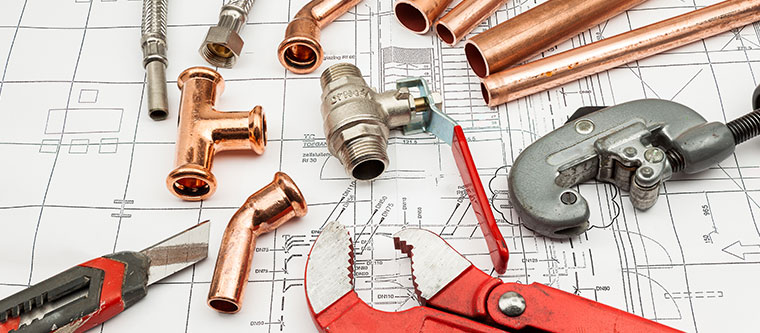How to Understand Your Property's Plumbing System Anatomy
How to Understand Your Property's Plumbing System Anatomy
Blog Article
Presented here on the next paragraphs you can find a good deal of sound insights regarding Plumbing Installation 101: All You Need to Know.

Comprehending exactly how your home's pipes system functions is essential for every single home owner. From providing tidy water for alcohol consumption, cooking, and showering to safely eliminating wastewater, a properly maintained plumbing system is crucial for your family's wellness and convenience. In this comprehensive overview, we'll discover the detailed network that composes your home's pipes and deal pointers on maintenance, upgrades, and handling common issues.
Introduction
Your home's plumbing system is more than just a network of pipes; it's a complex system that ensures you have access to clean water and effective wastewater elimination. Understanding its elements and exactly how they collaborate can help you prevent pricey fixings and ensure every little thing runs smoothly.
Basic Components of a Plumbing System
Pipes and Tubes
At the heart of your pipes system are the pipelines and tubes that carry water throughout your home. These can be constructed from numerous products such as copper, PVC, or PEX, each with its advantages in terms of durability and cost-effectiveness.
Components: Sinks, Toilets, Showers, and so on.
Components like sinks, bathrooms, showers, and bathtubs are where water is made use of in your home. Comprehending just how these components link to the plumbing system helps in identifying problems and planning upgrades.
Valves and Shut-off Factors
Shutoffs regulate the circulation of water in your pipes system. Shut-off shutoffs are vital throughout emergency situations or when you require to make repair services, enabling you to isolate parts of the system without disrupting water circulation to the whole home.
Water System System
Main Water Line
The primary water line links your home to the community supply of water or a private well. It's where water enters your home and is distributed to various components.
Water Meter and Stress Regulatory Authority
The water meter measures your water usage, while a stress regulatory authority makes sure that water streams at a risk-free pressure throughout your home's pipes system, protecting against damages to pipelines and fixtures.
Cold Water vs. Hot Water Lines
Recognizing the difference in between cold water lines, which provide water straight from the primary, and hot water lines, which carry warmed water from the hot water heater, helps in troubleshooting and preparing for upgrades.
Drainage System
Drain Pipes Pipeline and Traps
Drain pipelines bring wastewater far from sinks, showers, and bathrooms to the sewage system or septic system. Traps prevent drain gases from entering your home and also catch debris that might cause blockages.
Ventilation Pipes
Air flow pipes permit air into the water drainage system, avoiding suction that might slow water drainage and create catches to empty. Correct ventilation is crucial for preserving the integrity of your pipes system.
Significance of Proper Water Drainage
Guaranteeing correct drainage protects against back-ups and water damage. Consistently cleaning up drains pipes and preserving catches can avoid pricey repair work and extend the life of your pipes system.
Water Heating System
Kinds Of Water Heaters
Hot water heater can be tankless or traditional tank-style. Tankless heating systems heat water on demand, while containers store warmed water for immediate usage.
How Water Heaters Link to the Pipes System
Recognizing just how water heaters attach to both the cold water supply and hot water circulation lines aids in identifying concerns like insufficient warm water or leaks.
Maintenance Tips for Water Heaters
Consistently flushing your hot water heater to remove debris, examining the temperature settings, and checking for leakages can expand its lifespan and boost power efficiency.
Common Plumbing Concerns
Leaks and Their Reasons
Leakages can occur due to aging pipelines, loosened fittings, or high water stress. Resolving leakages without delay protects against water damage and mold growth.
Clogs and Clogs
Obstructions in drains pipes and commodes are frequently triggered by purging non-flushable items or a buildup of grease and hair. Utilizing drain screens and being mindful of what goes down your drains can avoid clogs.
Signs of Plumbing Troubles to Expect
Low water pressure, slow drains, foul odors, or unusually high water costs are signs of prospective plumbing problems that ought to be dealt with promptly.
Pipes Upkeep Tips
Routine Examinations and Checks
Set up yearly pipes assessments to catch issues early. Look for indicators of leakages, rust, or mineral buildup in faucets and showerheads.
DIY Maintenance Tasks
Simple tasks like cleaning faucet aerators, checking for toilet leakages utilizing dye tablets, or shielding revealed pipes in cold climates can protect against significant plumbing issues.
When to Call a Specialist Plumbing Professional
Know when a pipes issue requires specialist know-how. Attempting intricate repair services without proper expertise can cause more damage and greater repair work costs.
Updating Your Plumbing System
Reasons for Updating
Upgrading to water-efficient components or changing old pipes can improve water quality, reduce water costs, and boost the worth of your home.
Modern Pipes Technologies and Their Advantages
Explore technologies like clever leak detectors, water-saving commodes, and energy-efficient water heaters that can conserve cash and reduce ecological impact.
Price Considerations and ROI
Compute the in advance costs versus long-lasting savings when taking into consideration plumbing upgrades. Several upgrades pay for themselves with reduced energy expenses and fewer fixings.
Ecological Impact and Preservation
Water-Saving Fixtures and Devices
Setting up low-flow taps, showerheads, and toilets can dramatically decrease water use without sacrificing efficiency.
Tips for Reducing Water Use
Easy habits like taking care of leakages immediately, taking shorter showers, and running complete loads of washing and dishes can save water and reduced your utility expenses.
Eco-Friendly Pipes Options
Consider lasting pipes materials like bamboo for flooring, which is durable and green, or recycled glass for kitchen counters.
Emergency Readiness
Actions to Take During a Plumbing Emergency situation
Know where your shut-off shutoffs lie and exactly how to switch off the water in case of a burst pipeline or major leakage.
Importance of Having Emergency Calls Convenient
Keep contact info for neighborhood plumbers or emergency services conveniently available for fast response during a pipes crisis.
Do It Yourself Emergency Situation Fixes (When Appropriate).
Momentary solutions like making use of air duct tape to patch a leaking pipe or putting a pail under a trickling faucet can decrease damage up until a specialist plumber shows up.
Verdict.
Understanding the anatomy of your home's plumbing system equips you to preserve it successfully, conserving money and time on fixings. By adhering to normal upkeep regimens and remaining educated about modern pipes modern technologies, you can guarantee your plumbing system operates effectively for several years ahead.
Exploring Your Homes Plumbing Anatomy
Water Supply System
Main Water Line: This is where water enters your home from the municipal supply or a private well.
Water Meter: Typically located near where the main water line enters the property, it measures the amount of water used.
Shutoff Valve: It s crucial to know where this is in case of emergencies. It allows you to turn off the water supply to the entire house.
Pipes and Fittings: These distribute water throughout your home. Materials can include copper, PVC, or PEX.
Drain-Waste-Vent (DWV) System
Drains: Located in sinks, showers, and tubs, these carry wastewater away.
Traps: U-shaped pipes under sinks that hold standing water, blocking sewer gases from entering the home.
Vents: Pipes that lead from the DWV system to the outside, preventing vacuum formation and allowing gases to escape.
Sewer Line: Carries all wastewater from the home to the municipal sewer system or a septic tank.
Fixtures and Appliances
Sinks, Toilets, and Showers
Dishwashers and Washing Machines
Water Heaters
Maintenance Tips
Regularly check for leaks in exposed pipes and around fixtures.
Inspect the water heater annually for signs of wear.
Clean drains and traps to prevent clogs and odors.
Know how to shut off water to individual fixtures.
When to Call a Professional
Major leaks or burst pipes
Installation of new pipes or fixtures
Septic tank issues
Remodeling projects that involve plumbing changes
Conclusion
Understanding the anatomy of your home's plumbing is key to maintaining a functional and efficient system. Regular checks and knowing when to call in the experts can save you time, money, and stress.
https://www.mavyn.com/blog/exploring-your-homes-plumbing-anatomy

Exploring Your Homes Plumbing Anatomy
Water Supply System
Drain-Waste-Vent (DWV) System
Fixtures and Appliances
Maintenance Tips
When to Call a Professional
Conclusion
Understanding the anatomy of your home's plumbing is key to maintaining a functional and efficient system. Regular checks and knowing when to call in the experts can save you time, money, and stress.
https://www.mavyn.com/blog/exploring-your-homes-plumbing-anatomy
We were made aware of that report on Plumbing Installation 101: All You Need to Know from an acquaintance on a different web blog. Please pause to share this blog if you enjoyed reading it. We recognize the value of reading our article about The Inner Workings of Your Home's Plumbing.
Click Here Report this page